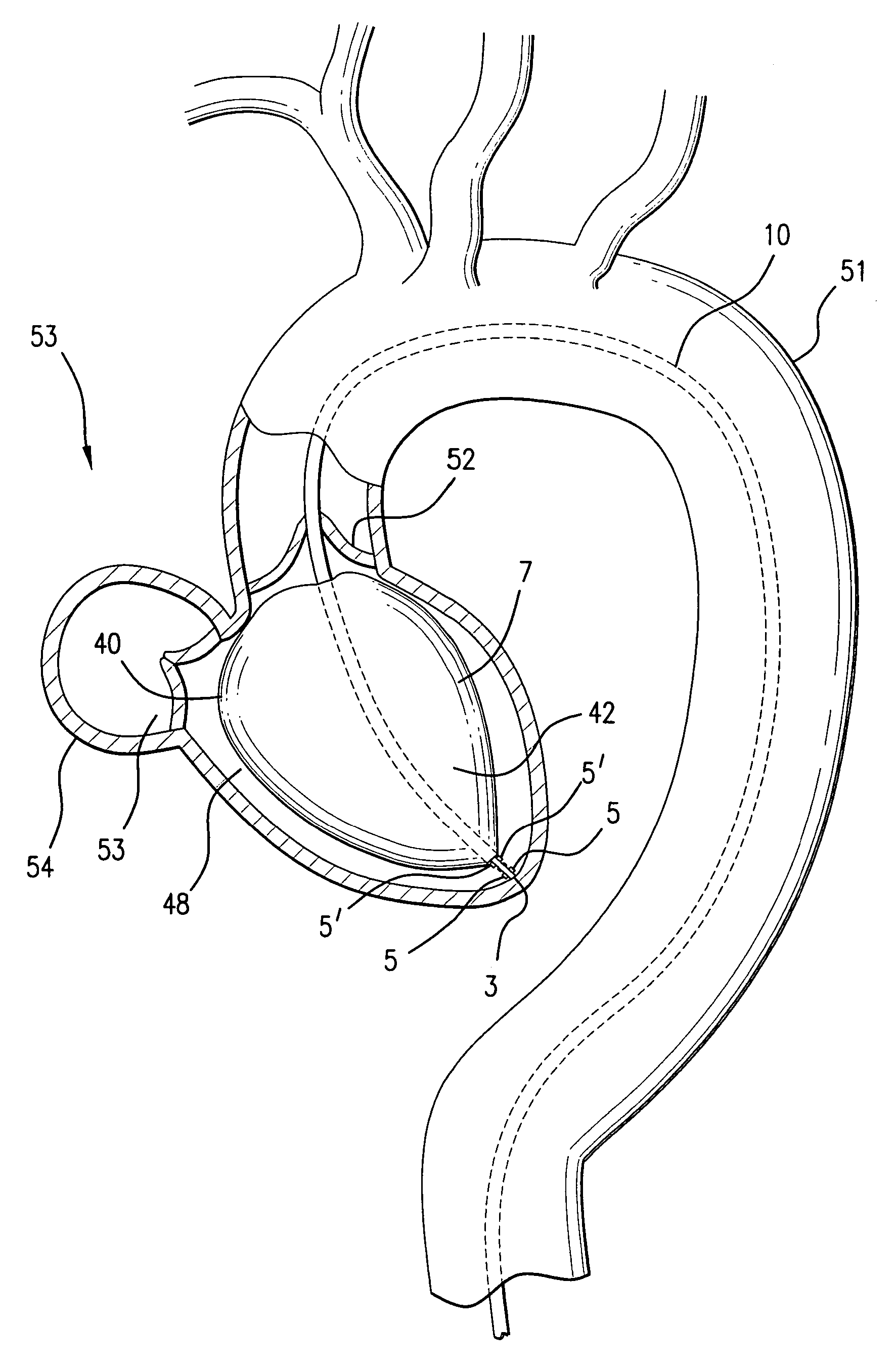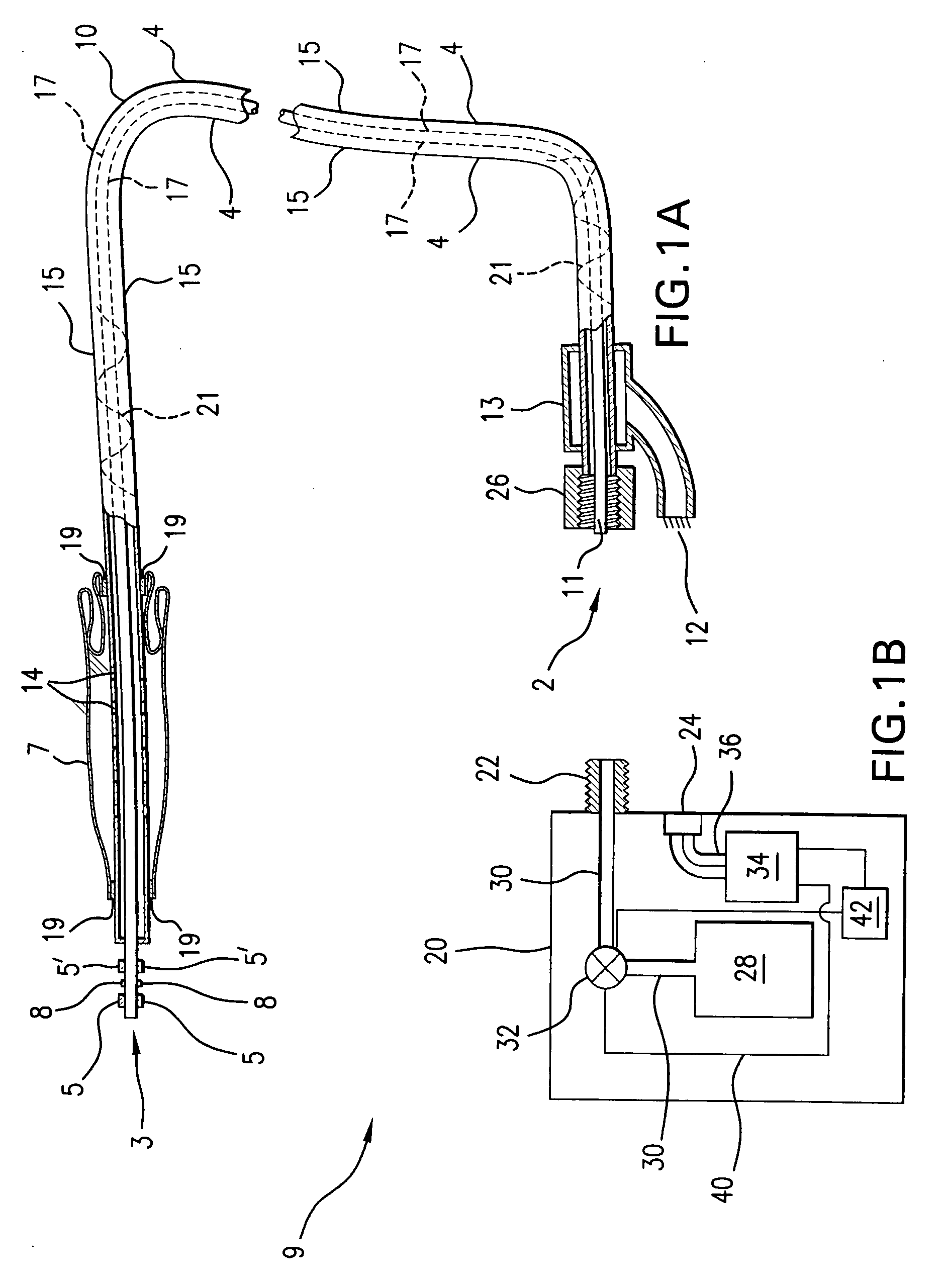Intra-ventricular cardiac assist device and related method of use
a technology of cardiac assist device and aortic valve, which is applied in the direction of circulatory assistance device, heart stimulator, therapy, etc., can solve the problems of unpredicted damage, reduced cardiac output, and energy exerted, so as to reduce the load on the left ventricle, increase blood flow, and reduce the effect of energy consumption
- Summary
- Abstract
- Description
- Claims
- Application Information
AI Technical Summary
Benefits of technology
Problems solved by technology
Method used
Image
Examples
Embodiment Construction
[0028] In order to understand the invention and to see how it may be carried out in practice, a preferred embodiment will now be described, by way of non-limiting example only, with reference to the drawings.
[0029] As used in the specification herein the terms intra-ventricular device and intra-ventricular balloon are used interchangeably and are meant to have the same meaning unless otherwise stated.
[0030]FIG. 1A shows an intra-ventricular balloon and FIG. 1B the related system, generally indicated by 9, in accordance with one embodiment of the invention. The system 9 includes a slender flexible catheter 10 with a proximal end 2 and a distal end 3. An inflatable balloon 7, to be described in detail below, is mounted on the catheter 10 near the distal end 3. The balloon 7 is shown in FIG. 1A in its deflated state and compactly folded onto the outer surface of the catheter 10. The catheter has an outer tubular member 15 and an inner tubular member 17 coaxial with the outer tubular ...
PUM
 Login to View More
Login to View More Abstract
Description
Claims
Application Information
 Login to View More
Login to View More - R&D
- Intellectual Property
- Life Sciences
- Materials
- Tech Scout
- Unparalleled Data Quality
- Higher Quality Content
- 60% Fewer Hallucinations
Browse by: Latest US Patents, China's latest patents, Technical Efficacy Thesaurus, Application Domain, Technology Topic, Popular Technical Reports.
© 2025 PatSnap. All rights reserved.Legal|Privacy policy|Modern Slavery Act Transparency Statement|Sitemap|About US| Contact US: help@patsnap.com



